PROTECT YOUR DNA WITH QUANTUM TECHNOLOGY
Orgo-Life the new way to the future Advertising by AdpathwayIf you like cardinal climbers, you’ll love cypress vines! The two are close relatives in the morning glory family, Convolvulaceae. They use their vining tendrils to latch onto trees, shrubs, and structures as they reach upwards.
Many gardeners prefer cypress vines over morning glories and cardinal climbers, as they have lacey, ferny leaves and delicate red, white, or pink blooms. They’re incredibly ornamental, more so than the other tall vines.
With the right care and support, cypress vines may reach 20 feet or taller! Give them what they need, and they’ll reward you with tropical flowers, ferny foliage, and decorative seed pods throughout the warm months.
Funny Valentine Blend Cypress Vine Seeds
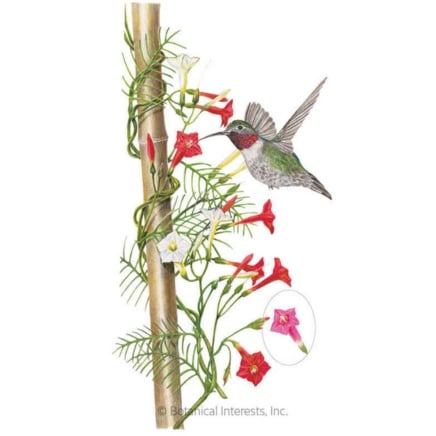
- Vibrant tubular blooms attract hummingbirds
- Lush, ferny foliage for added visual interest
- Ideal for trellises, arbors, or privacy screens
Cypress Vine Overview

|
Plant Type Annual Vine Family Convolvulaceae Genus Ipomoea Species quamoclit |
Native Area Mexico, Central and South America Exposure Full sun Height 15-20’ Watering Requirements Regular |
Pests & Diseases No serious problems Maintenance High Soil Type Average, well-drained Hardiness Zone 11-12 |
What Is It?
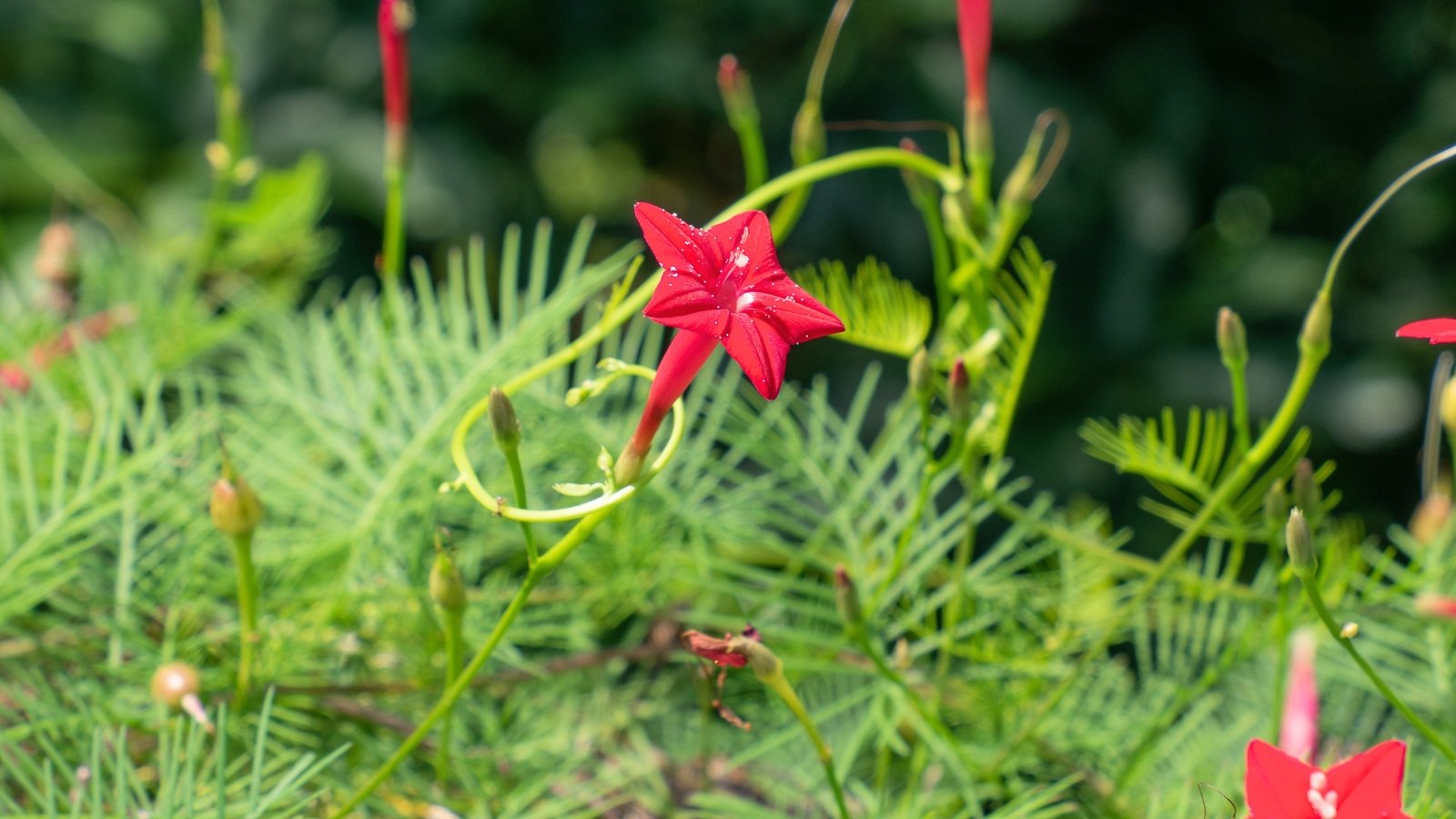 A fast-growing climber that blooms bright through the season.
A fast-growing climber that blooms bright through the season.Cypress vine is an annual climber, meaning it dies after blooming and producing seed pods. It may grow like a perennial in warm regions like gardens in USDA hardiness zones 11 and 12. Treat it like a summer annual in all other regions.
Native Area
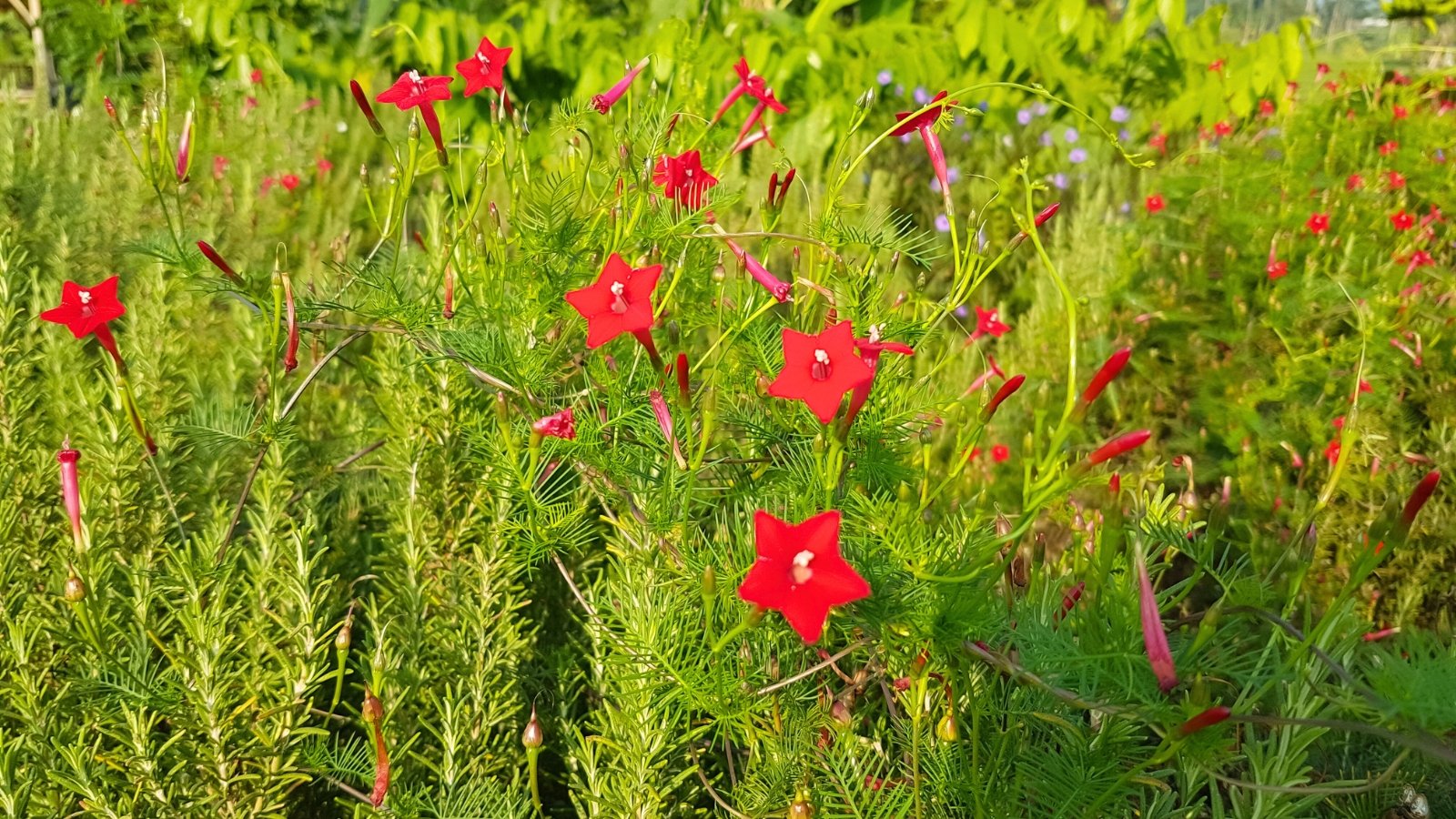 It loves hot spots but might surprise in cooler zones.
It loves hot spots but might surprise in cooler zones.Native to Mexico and many Central and South American countries, the cypress vine is a tropical grower that prefers hot temperatures, ample sunshine, and high humidity. It prefers growing in frost-free regions, though it may self-seed in chilly zones.
Nowadays, the cypress vine and its cultivars are common in many regions of the world. The plant naturalizes where it grows, creating lovely stands of ferny leaves and fiery blooms. The vine spreads seeds that germinate the following year when temperatures warm and days lengthen in spring.
Although not native to the U.S., this vine will persist where you plant it. Pull up seedlings if you’d rather they not grow, and cut off seed heads before they fall to the ground to prevent them from sprouting. The vine tends not to invade natural areas, and it’s a less aggressive option than morning glories in areas where the plants are invasive.
Characteristics
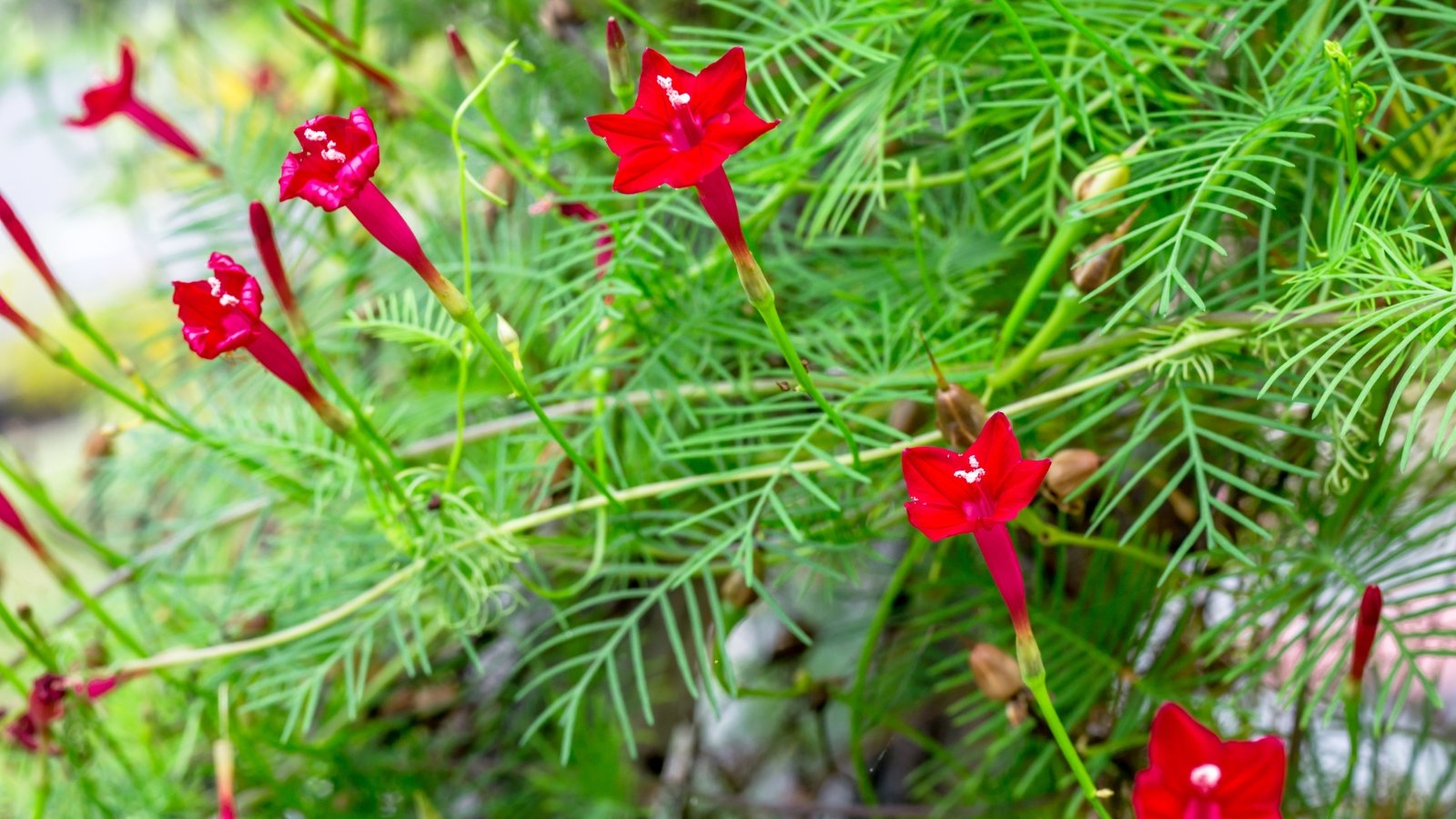 Blooms keep coming from midsummer right up to the frost.
Blooms keep coming from midsummer right up to the frost.Unlike morning glories, cypress vines have delicate, fern-like leaves. Bright red and tubular flowers appear from midsummer onwards until the first frost in autumn. Some choice varieties have pink, white, or scarlet red blooms.
The twining stems can reach 20 feet or taller, though they typically stay between six and 10 feet long. They’re not sturdy, and they require other supports to grow upright. Fences, tree trunks, and arbors are all great structures for training the vines.
Inside the blooms lie valuable nectar and pollen for pollinators. Both butterflies and hummingbirds like the flowers, and you’ll see them frequenting your plants while they’re in full bloom.
Planting
You’ll sometimes find cypress vine seedlings available at nurseries and garden centers, though the plants are more often available in seed packets. Seedlings have sensitive roots that dislike disturbance, making seed starting a preferable planting option.
Growing from Seed
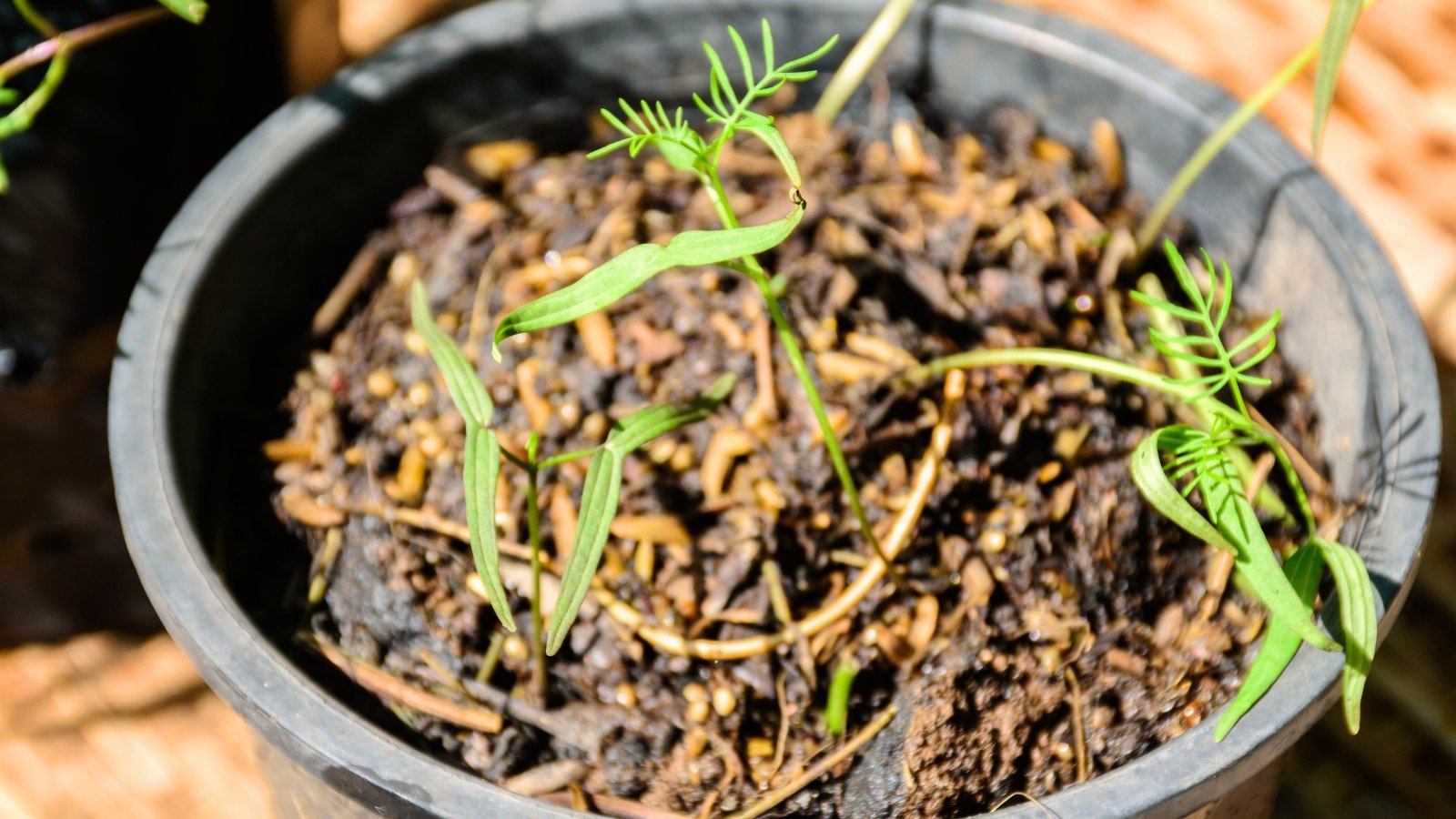 Thin seedlings gently once they hit that two-inch mark.
Thin seedlings gently once they hit that two-inch mark.Once you acquire seeds, it’s time to germinate them! You may start them indoors ahead of the spring season, though the plants will struggle to transplant because of their sensitive roots. Instead, sow seeds outdoors one to two weeks after your last average frost date.
Before planting, it’s best to scarify and soak the seeds so they germinate rapidly and readily. Use a nail file to lightly scratch their outer surface, then soak them in water for a day before planting them.
Start the planting process by preparing beds or containers. Rake the soil, plant seeds a half-inch deep in the ground, and water them well. Watch as seedlings appear five to 15 days later.
If the seedlings are too close together, you’ll need to thin them so they have ample space to climb and twine. When the seedlings are two inches tall, thin them so one plant remains every six to 12 inches apart. Support the plants when they’re young with stakes or trellises so they don’t flop on the ground.
Transplanting
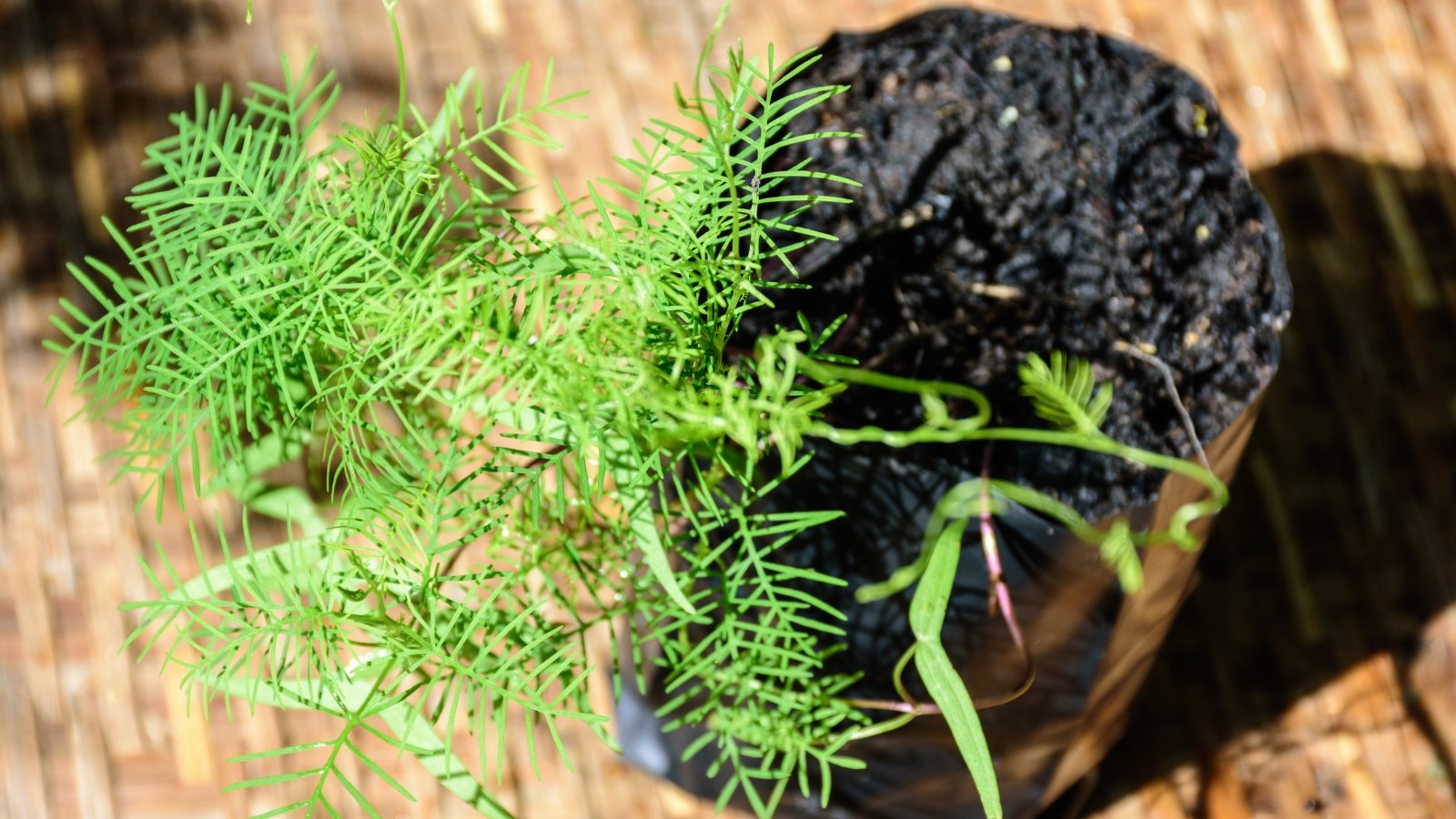 Start indoors, then plant the whole pot outside later.
Start indoors, then plant the whole pot outside later.Though it’s not the preferred option, it’s possible to transplant these annuals into the garden. Sow the seeds in biodegradable pots six to eight weeks before you plan on bringing the plants outside. Biodegradable pots, like those made of paper or cardboard, don’t require you to pull the rootballs out of them. Simply set the pots in the ground, and they’ll break down over time.
Seedlings need light, water, and air while they’re indoors. Give them plenty of light from a well-lit window or grow lights, and water the pots so the soil stays consistently moist.
Transplant healthy seedlings outdoors a week or two after the final frost. Dig holes as deep and twice as wide as the biodegradable pots, then set the pots inside. Cover the tops of the containers with soil, then water them well to help the seedlings adapt to the site.
How to Grow
Cypress vines are easy to care for! They tolerate various moisture levels, and they lack serious pests or diseases. Support them, water them, and feed them to enjoy their red blooms and ferny leaves from spring through fall.
Light
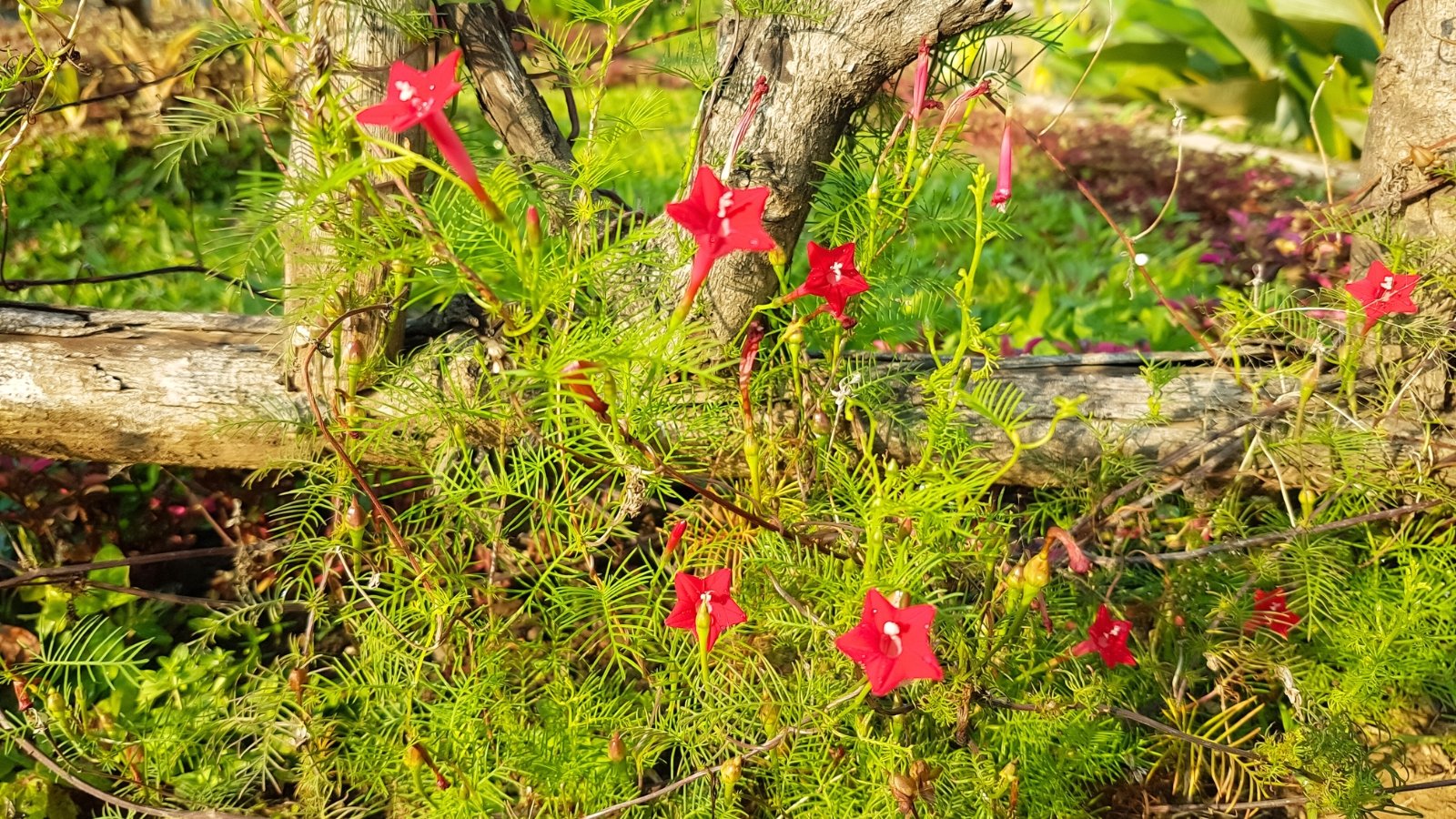 Sun-soaked days grow stronger vines with bolder blooms.
Sun-soaked days grow stronger vines with bolder blooms.Cypress vines are sun-lovers. They thrive in areas with full sun, meaning they need six or more hours of daily direct sunlight. Avoid planting them in partial or dappled shade, as they’ll have weak growth and few flowers.
In hot, sunny areas like Southern California and Florida, these vines appreciate afternoon shade when temperatures are at their hottest. Shade your specimens with an umbrella or shade cloth if you notice signs of sunburn, like brown patches and wilting leaves.
Water
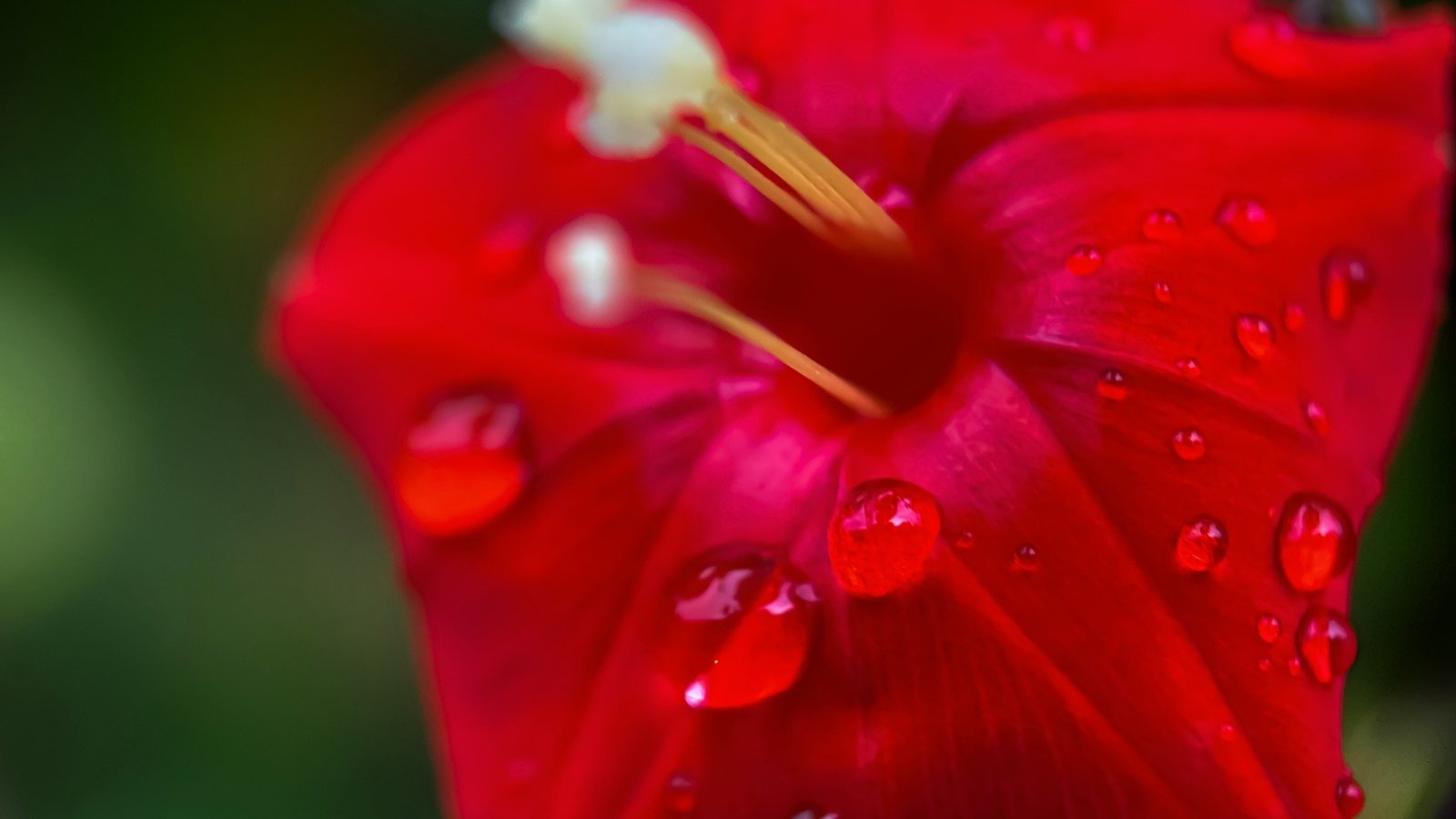 Thirsty vines droop fast, so don’t skip the watering.
Thirsty vines droop fast, so don’t skip the watering.Though cypress vines like sunny, hot weather, they also appreciate consistent moisture while they’re growing. Regular water is crucial in keeping them happy, healthy, and vigorous. They tolerate temporary sogginess or dryness, but they prefer consistent moisture.
Potted plants need more water than in-ground ones. You may have to water potted specimens daily when the temperatures are high and sunlight is abundant. Check the soil with your finger, and water well if it feels dry or dusty.
Soil
 Cypress vines thrive where roots can breathe and water drains well.
Cypress vines thrive where roots can breathe and water drains well.These annuals aren’t picky. They prefer growing in well-drained soil, yet they’ll tolerate a wide range of different types. Drainage is the most important aspect.
Loam is a good choice for cypress vine plants. It’s an equal combination of sand, silt, and clay. Other variations of loam will do, like sandy loam or sandy clay loam. Avoid heavy clay, as it tends to be too dense for the fine roots to grow into.
Fertile soils promote ample leaves, flowers, and seed pods. Add compost to the site when you plant seeds. It’ll decay over time, adding nutrients and boosting the soil’s structure.
Fertilizing
 A light feeding helps, but too much holds them back.
A light feeding helps, but too much holds them back.These annuals require little fertilizer. Too much nitrogen promotes leafy growth instead of flowers, and excess nutrients can prove detrimental instead of beneficial! A soil test is one easy way to test the ground and see the nutrient levels.
If your soil is nutrient deficient, add a half-dose of organic fertilizer to the ground once or twice during the growing season. Water it in, then watch how the vines respond over the next few weeks. They should sprout healthy new growth, ample blooms, and vigorous shoots.
Maintenance
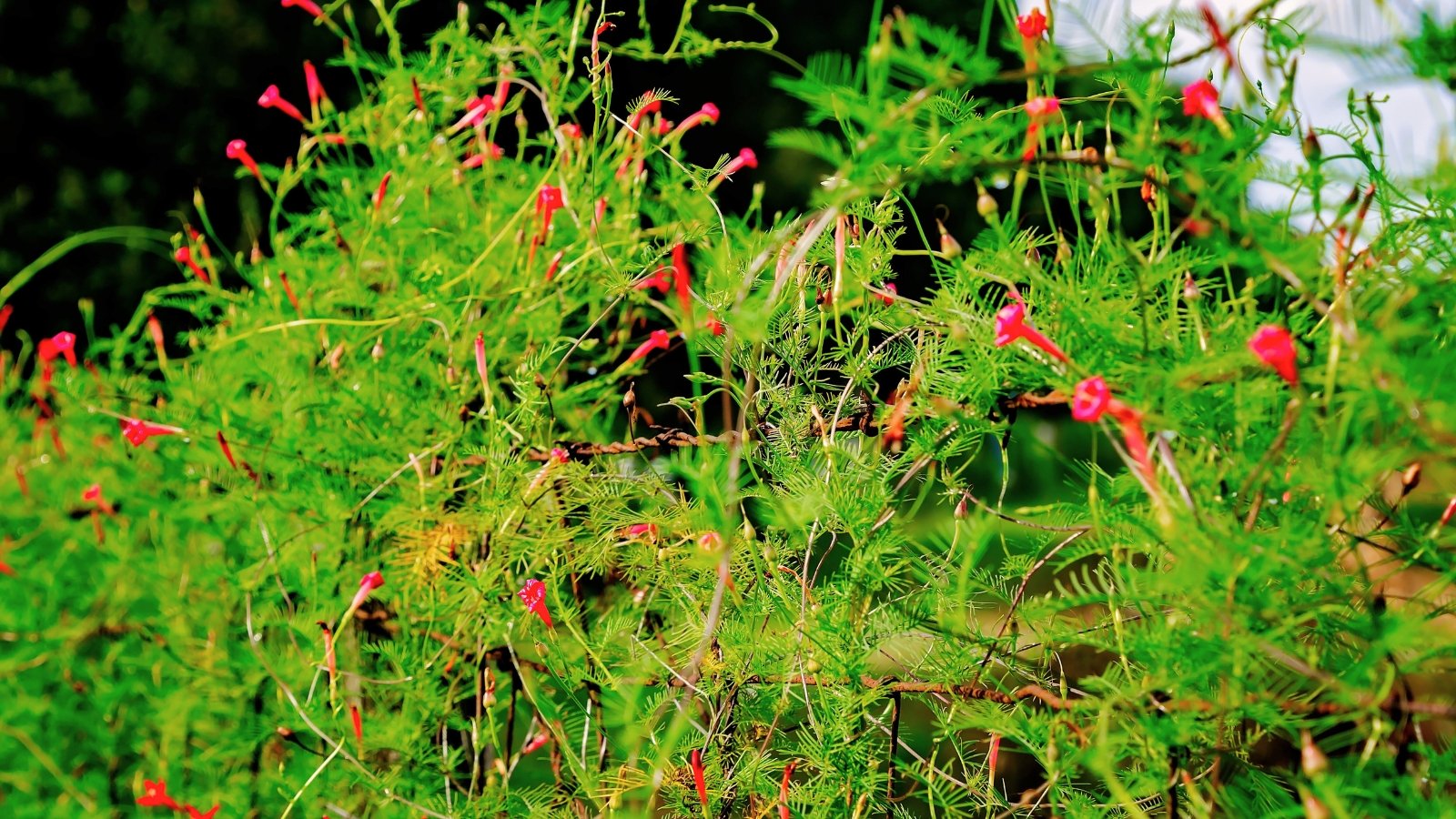 Trim often to shape and tame the chaos.
Trim often to shape and tame the chaos.Though pest and disease-free, cypress vines require some maintenance to grow their best. They’re not invasive, but they can be weedy and aggressive. Prune or trim the stems as necessary to control their growth. Remove unruly ones, and train the others on their support.
Seedlings sprout when seeds fall to the ground and germinate. Let them grow if you like where they sprout; otherwise, pull them up and throw them in the compost.
Propagation
Seed starting is the easiest and most efficient way to propagate your plants. It’s not the only propagation method, but it is the easiest! If you like a particular plant and want to replicate it, take cuttings during the growing season and sprout them in pots with soil.
Seed Saving
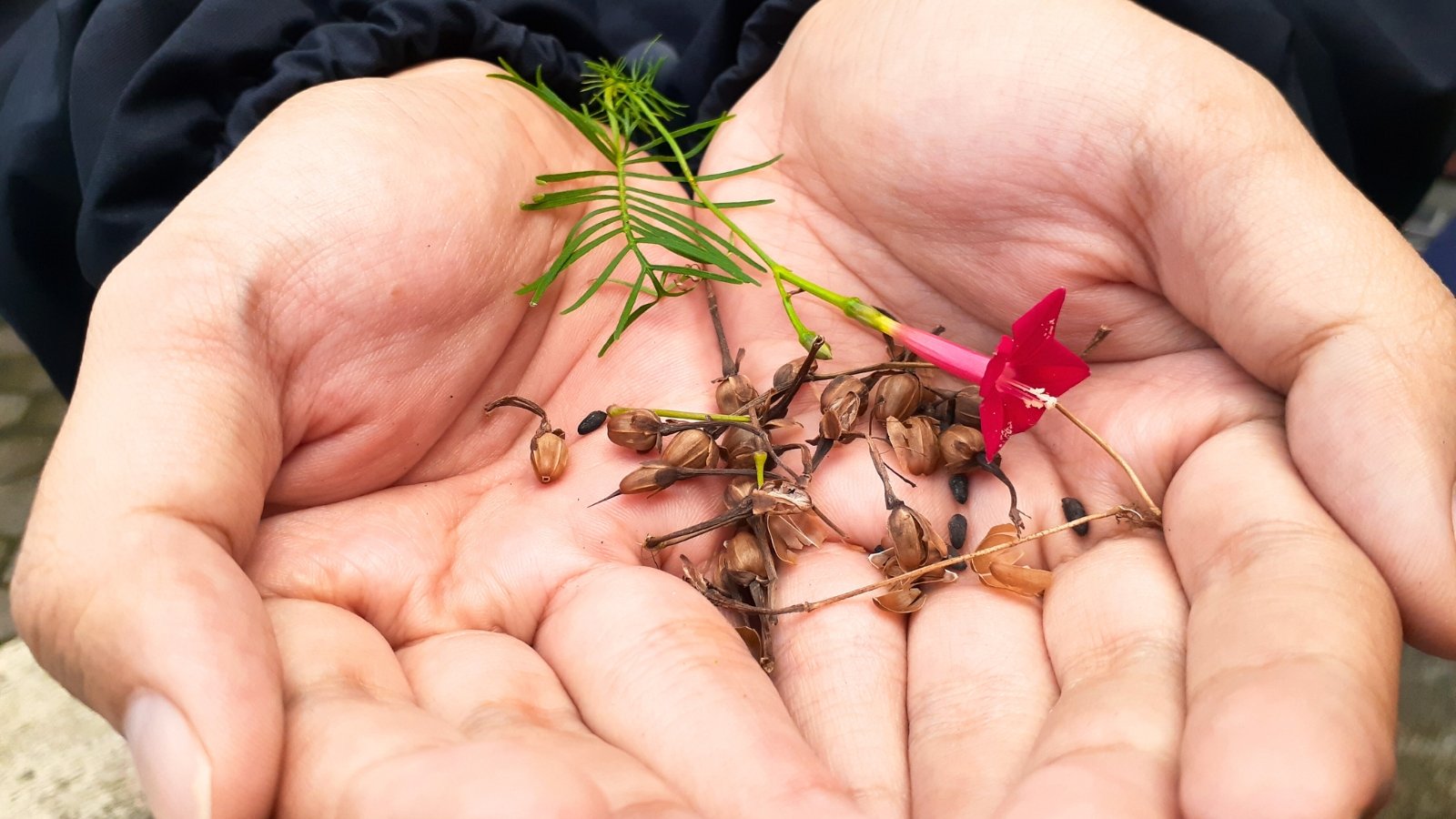 Snap off dry pods and save a summer’s worth.
Snap off dry pods and save a summer’s worth.To save seeds, you’ll need to wait for the tubular red blossoms to morph into seed pods. Watch as the petals shrivel and give way to round, green pods. The pods turn brown when the seeds ripen inside.
Pick the dry, brown pods off the plant, then crush them over a jar or container to let the small black seeds fall to the bottom. Store them in a jar or envelope, and place them in a cool, dark, and dry location until you’re ready to plant them.
Cuttings
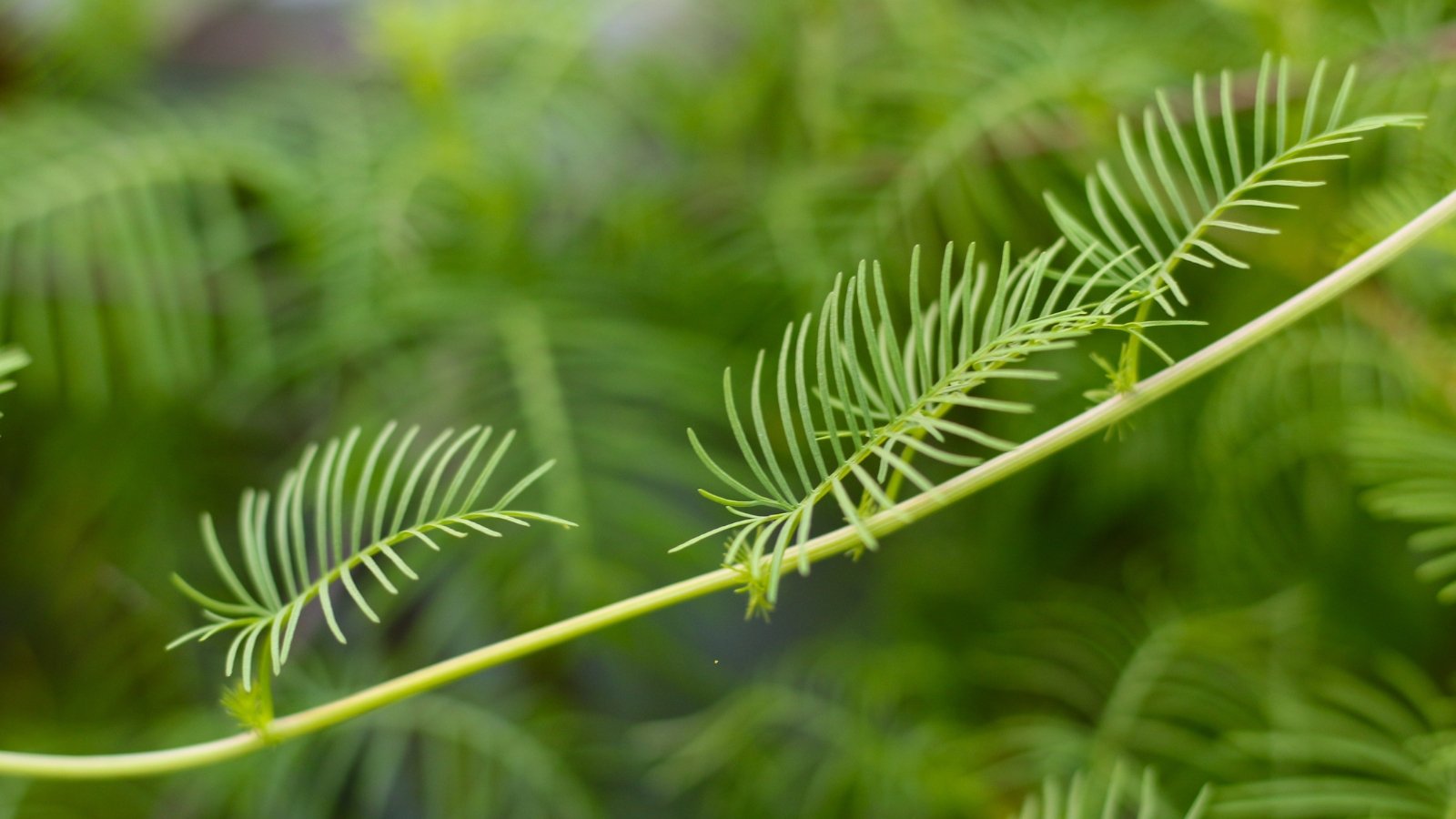 Healthy stems make the best cuttings for new plants.
Healthy stems make the best cuttings for new plants.Though seeds are easier to propagate than cuttings, cuttings are a great way to replicate healthy plants if seeds won’t do. Maybe your plants never formed seed pods, or you have a short growing season—either way, cuttings are a great way to propagate healthy vines before they die at the end of the season.
Start by finding disease-free stems with healthy leaves. Cut four to six-inch pieces off the plants, then strip them of their flowers and lower leaves. Plant the stripped cuttings in pots with fresh potting soil, and water them well.
Cuttings root best with mild temperatures, filtered sunlight, and high humidity. Place the pots in trays and add humidity domes on top to increase humidity levels. Situate the cuttings under partial shade or dappled sunlight until they form roots, keeping them moist the entire time.
Popular Varieties
Three main types stand out from the rest. Whether you want showy colors or unique foliage, these three cultivars grow better than the others in home gardens.
Funny Valentine Blend
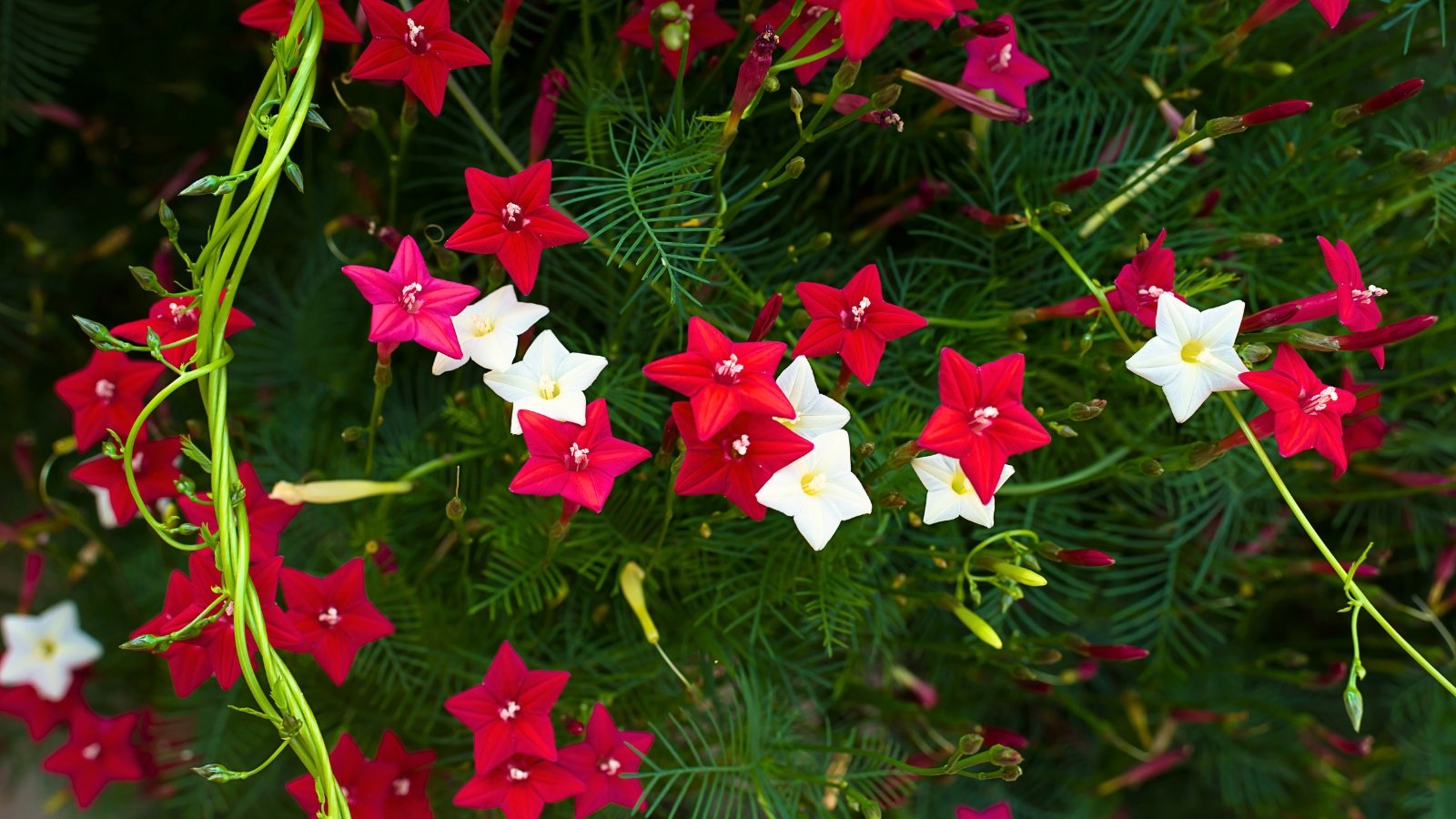 Taller vines grow best with steady watering and firm support.C
Taller vines grow best with steady watering and firm support.C‘Funny Valentine Blend’ features a stunning mix of flower colors, with pink, white, and red flowers sprouting all over the stems. The vines reach anywhere from six to 20 feet long, depending on how much support they have and how moist their soil stays.
If you’d like one flower color instead of three, simply weed out the seedlings that sprout colors you don’t want. The remaining ones with your preferred color will take their place.
Alba
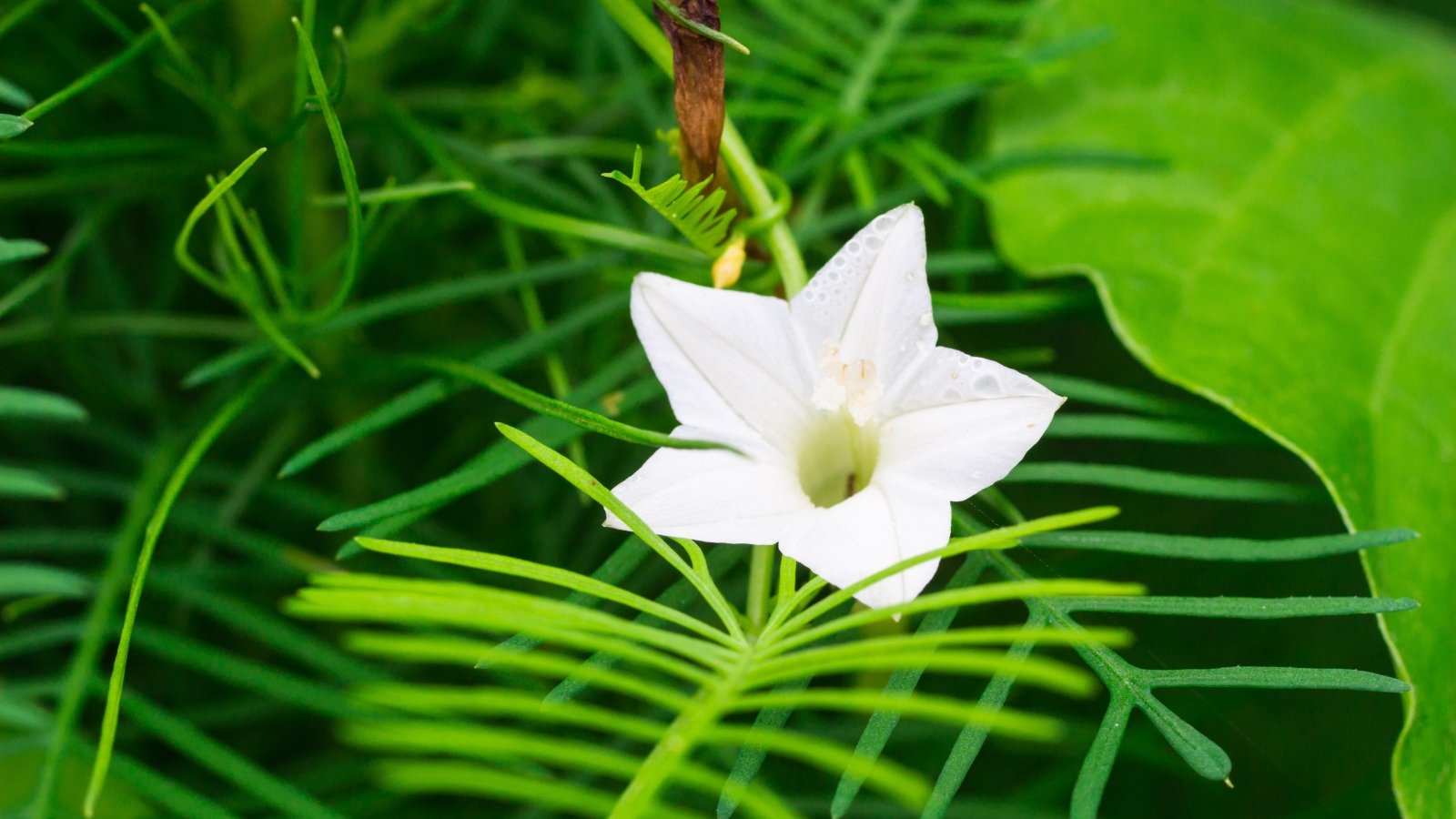 A moon garden starts with bright white flowers and leaves.
A moon garden starts with bright white flowers and leaves.‘Alba’ is a white flowering variety. It sprouts white blooms exclusively, and it has the distinct ferny leaves of the species.
This cultivar is exceptional next to moonflowers. Moonflowers are a close relative in the same family, and they have white morning glory blooms. Together, they form the beginning of a moon garden!
Cardinal Climber
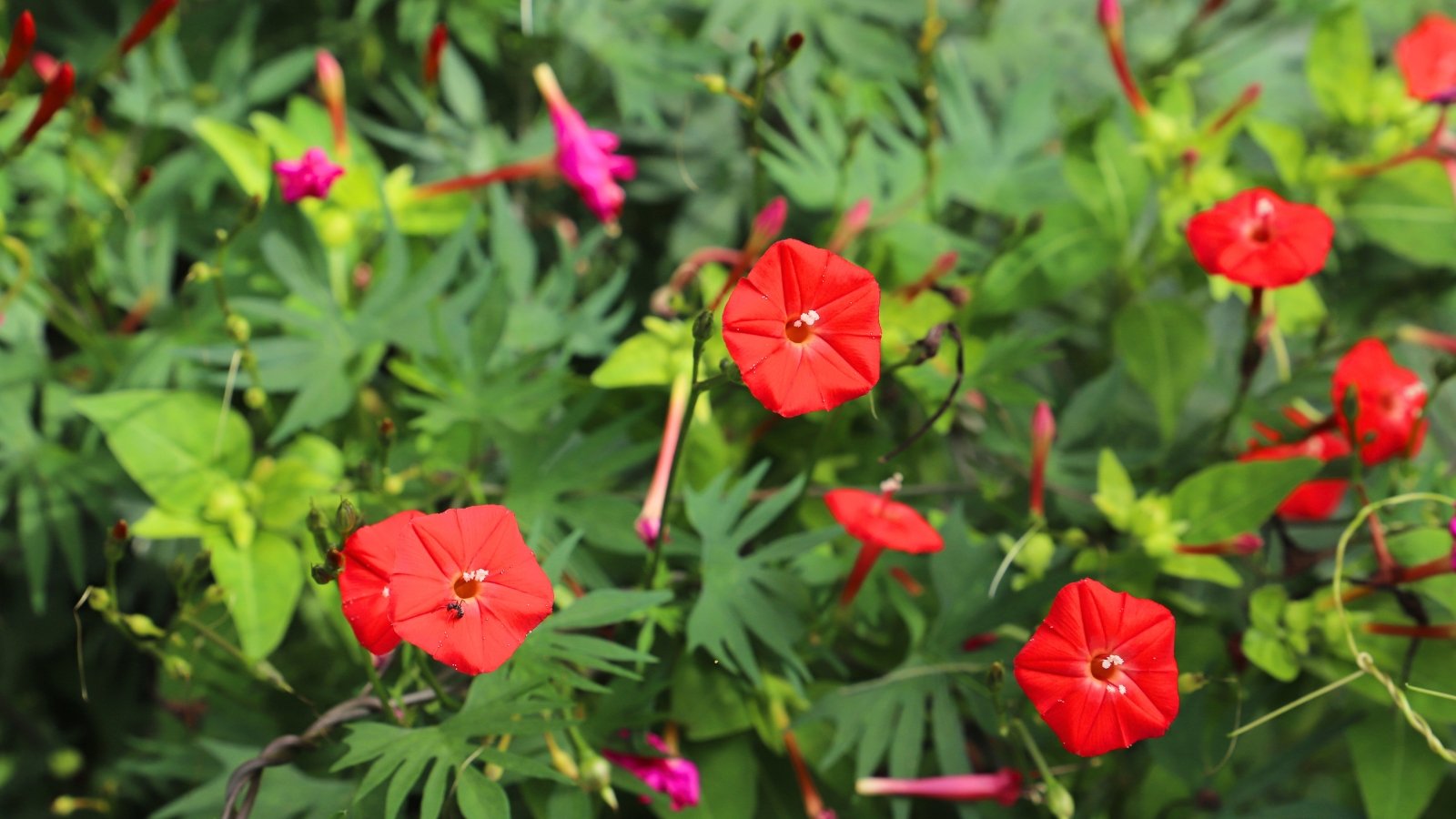 Bright red tubular flowers light up any garden space.
Bright red tubular flowers light up any garden space.The cardinal climber resembles the cypress vine because it’s a descendant of it! Cardinal climber is a hybrid of Ipomoea quamoclit and I. coccinea, the red-flowering morning glory. It features leaves that look like a combination of morning glories and cypress vines, and it sprouts red, tubular flowers like its parent.
Though this vine is a hybrid, it reproduces true to seed. You may collect the seeds and save them to propagate in spring.
Common Problems
These ornamental plants are problem-free! They have no serious pests or diseases. You may see some insects or spots on the leaves, though you’ll rarely see infestations. Prevent issues, minor or major, by giving the plants the conditions they need to thrive.
Pests
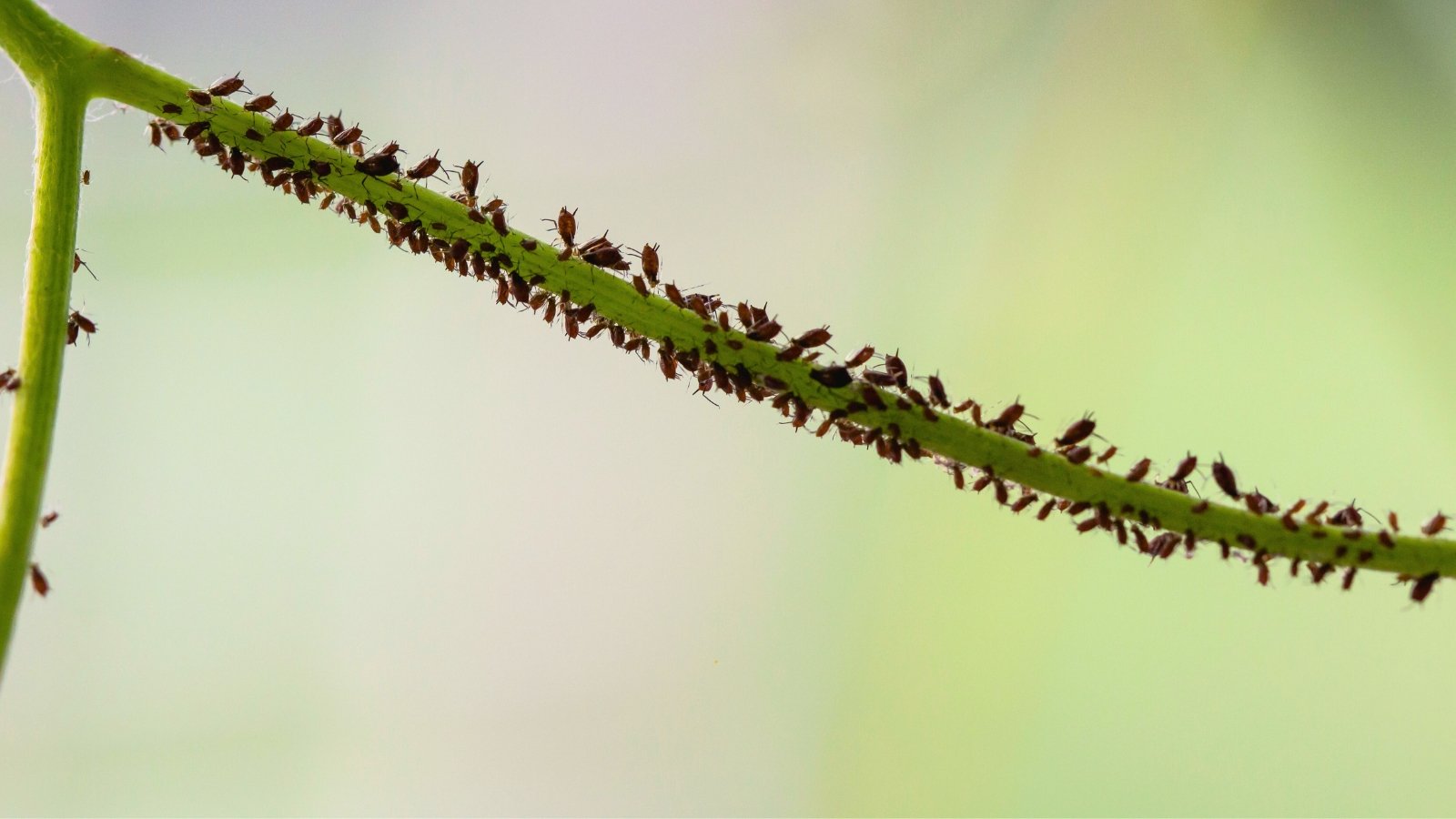 Thirsty plants in shade might invite unwanted tiny guests.
Thirsty plants in shade might invite unwanted tiny guests.Spider mites may target thirsty plants in the shade, and aphids may appear on tender new growth. Simply wet the leaves to discourage them, and use a strong stream to spray them off. The pesky creatures will disappear if you hose them off daily.
Diseases
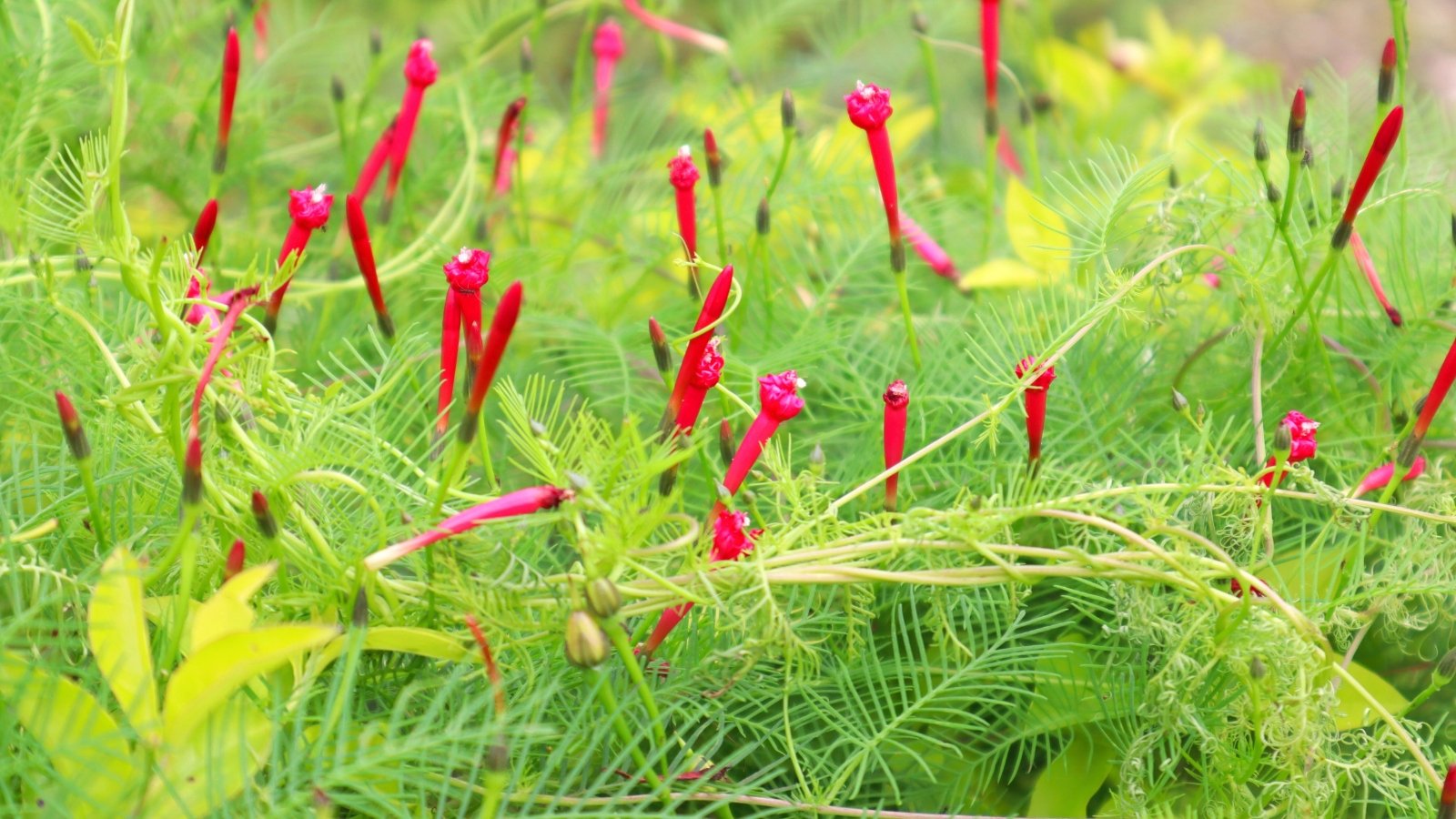 These vines avoid most diseases when soil stays balanced.
These vines avoid most diseases when soil stays balanced.As with pests, these vines are relatively disease-free. They may suffer from rots in soggy soils or withering in dry ones, but that’s the full extent of their problems! Keep your specimens disease-free by planting them in well-draining, fertile soil and by watering regularly but not too much.
Frequently Asked Questions
Its seeds are poisonous in large quantities, and the plants themselves are toxic to cats, dogs, and horses. Consider an alternative ornamental species if you live on a farm or have curious pets that like to eat plants.
It blooms from midsummer through fall until the first frost arrives.
Yes, it can! Use a medium or large container, and wet the soil often to ensure it stays moist, but not soggy.


 2 weeks ago
17
2 weeks ago
17





















 English (US) ·
English (US) ·  French (CA) ·
French (CA) ·